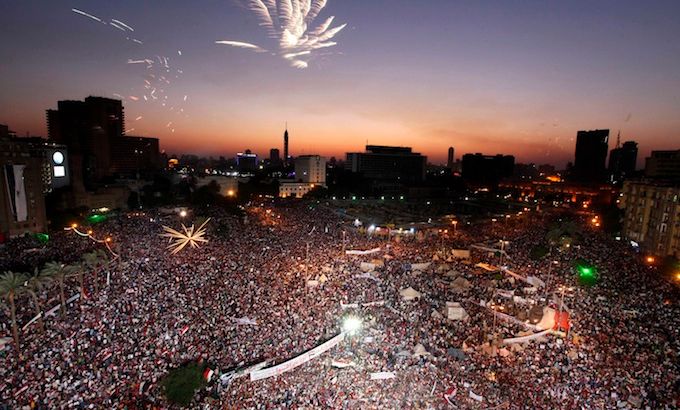
Egypt: Revolution Revisited
How the dramatic events in the summer of 2013 have affected those who brought about Egypt’s 2011 revolution.
At various times between 2011 and 2013, People & Power has filmed with a key group of pro-democracy activists involved in the 2011 Egyptian uprising and its aftermath.
The predominantly secular April 6 Youth Movement was instrumental in mobilising some of the first mass demonstrations against Hosni Mubarak in Cairo’s Tahrir Square and, ever since, its followers have been determined to protect the revolution they helped to bring into being.
Keep reading
list of 4 itemsWhat challenges do Turkey, Egypt face in restoring ties?
Yusuf al-Qaradawi, the Muslim scholar who influenced millions
Qatar’s emir in Cairo for talks with Egypt’s president
When we last met them in July 2012, their leader, Ahmed Maher, had joined a body charged with drawing up a new national constitution, but he was unsure whether to continue lending April 6’s weight to President Mohamed Morsi and the newly installed Muslim Brotherhood government or stick to the ideals the group had developed on the street.
In the months that followed, concern about the Morsi administration’s authoritarian tone saw April 6’s stance harden into political opposition and Ahmed Maher withdrew from the assembly.
“I left because they’d gone back on everything we’d agreed,” Maher later explained. “The president made a constitutional announcement in November or December 2012 but the powers it gave him created turmoil. We tried to talk to the Brotherhood, explaining that in our view this was wrong and would turn people against them. We explained it would cause division in society. They said: ‘Let society be divided and if it leads to violence, then so be it. This constitution will pass under any price.’ They told us this bluntly, more than once.”
It was a key turning point. From that moment, the April 6 Youth Movement allied itself to Tamarod (“rebellion”), a coalition of opposition groups, whose main focus was drawing up petitions that called for President Morsi to resign and for early elections to be held.
But then this summer, events took a dramatic turn. On July 3, emboldened by what it saw as growing popular opposition to the Muslim Brotherhood, which had culminated in three days of demonstrations in Tahrir Square, the Egyptian Army forced Morsi to stand down.
In his place it installed a judge, Adly Mansour, as interim president, though it was soon very clear that the military, led by Defence Minister General Fattah el-Sisi, was pulling the new government’s strings.
A tense stand-off followed as pro-Morsi supporters mounted their own sit-ins and demonstrations in opposition to the military takeover and Egypt’s security forces began preparing for what threatened to be a brutal crack-down.
Stuck in the middle and increasingly isolated from the rest of the now pro-Army Tamarod group, April 6 and its activists had to decide what to do next.
Would a liberal pro-democracy movement, which two years earlier had helped overthrow a dictator, accept the coup that had ousted his democratically elected successor? And how would its activists respond to the state using violence to suppress Morsi’s supporters?
Over five tumultuous weeks, People & Power returned to Egypt in the summer of 2013 to go behind the scenes with April 6 as its members tried to reconcile their pro-democracy principles with what was happening to their country and as the pressure on the pro-Morsi camp was building to a deadly climax.